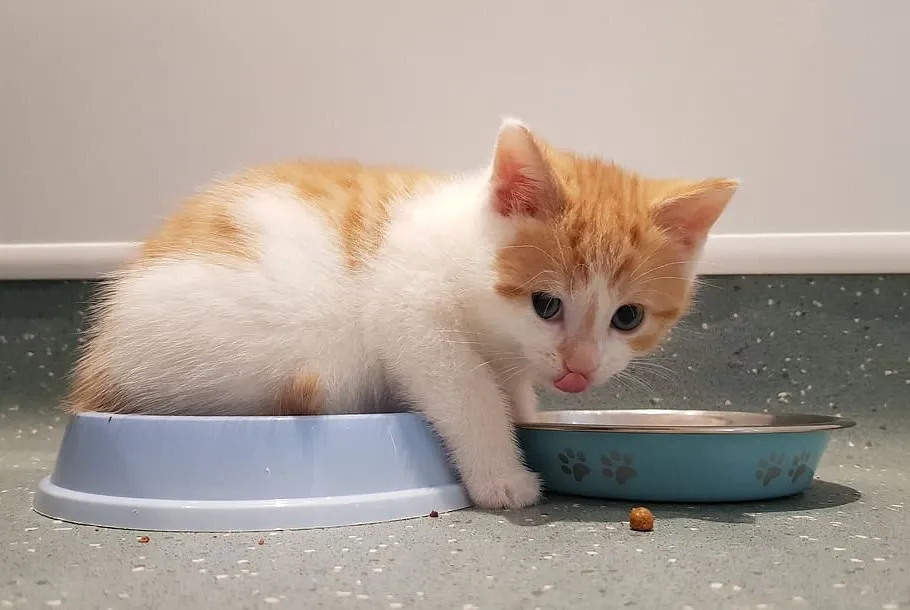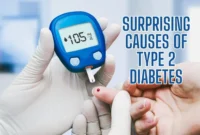Kittens require a specific diet to ensure all their nutritional needs are met. Although the correct nutrition for kittens can be difficult to discern, it is essential that owners select the right food and feeding practices.
This article provides an overview of the best kitten foods available, with advice from veterinarians on how to prioritize animal-based ingredients, understand wet and dry food types, read labels for AAFCO statements, consider age-appropriate recommendations, determine portion sizes and offer variety in your kitten’s diet.
It also explains how to transition safely from one food type to another. Through this comprehensive guide, owners will have all the information required to make informed decisions about selecting the perfect kitten food.
Understanding Kitten Nutrition
Kitten nutrition is largely dependent on the type of food chosen, as kittens require high levels of protein and DHA to support their rapid growth; wet kitten food is the most natural way to meet these needs while also providing moisture, and dry food can be convenient and economical if of a high-quality.
For kittens that are still growing, it’s important to select foods with an AAFCO statement for growth or all life stages on their label to guarantee that it is complete and balanced. Finding a reputable company that employs a board-certified nutritionist and carries out quality control testing should also be a priority when choosing kitten food. It’s best to choose foods that are based on animal proteins rather than plant proteins, as cats need animal protein sources in order to survive and thrive. The nutritional profile should include high levels of protein, low carbohydrates, and high moisture content. Limited ingredient diets (LID) may be recommended by a veterinarian if your cat has sensitivities or allergies. In addition, pet owners should look for brands that use less expensive ingredients without sacrificing quality.
Kittens should be offered multiple meals daily due to their higher energy needs compared with adult cats. Cats prefer getting most of their water from their food so wet foods are beneficial for hydration purposes as well as providing essential nutrients for healthy development.
When transitioning kittens off mom’s milk or formula at around 8 weeks old, it is best practice to gradually introduce them to new kitten food over 5-10 days in order for them not to develop stomach ailments due to sudden changes in diet composition. If you notice any signs like diarrhea, vomiting, or loss of appetite during the transition process it may be necessary to slow down the conversion rate until the symptoms improve. Once your kitten tastes better quality kibble they may start preferring this over lower-end options so continued feeding of higher quality products is recommended once your feline friend finds something they like eating regularly.
It is important that you consult with your veterinarian about the ideal body condition score (BCS), weight and energy needs specific for your individual pet when they reach 9-12 months old as this will help determine what type of diet would suit them best going forward into adulthood depending on their circumstances such as whether they have any health conditions requiring special dietary requirements or not.
Proper nutrition can go a long way towards helping ensure optimal health throughout adulthood so ensuring you select an appropriate product right from the beginning will give your furry companion every chance at living a happy life full of vigor!
Reading Labels and Ingredients
Reading labels and ingredients carefully is essential for selecting a high-quality diet that will provide the nutrition necessary for kittens to thrive.
Dry food, which is popular due to its affordability, convenience, and ease of storage, must have an Association of American Feed Control Officials (AAFCO) statement for growth or all life stages on its label to guarantee complete and balanced nutrition for kittens.
The best kitten food should contain meat protein sources as the first ingredient; amino acids such as taurine; fatty acids like omega-3s; vitamins and minerals like calcium and phosphorus; plus a balance of carbohydrates that are easily digestible.
Pet food companies should be able to provide information about their quality control measures and the type of facilities they use. It is also important to look out for reputable brands that adhere to good quality control standards.
Additionally, ingredients such as byproducts or artificial preservatives are not necessarily unhealthy when used in moderation in a complete diet formula.
Ultimately, it is recommended that pet owners consult with their veterinarian before choosing any particular brand or type of food to ensure it meets individual kitten’s nutritional needs.
Selecting the Right Food Type
Selecting the right type of food for a kitten can be crucial in providing adequate nutrition for their growth and development. Wet food is the most natural way to keep kittens hydrated while meeting their nutritional needs, as it provides more moisture than dry cat food. It is also important to look for high-quality wet foods that are rich in proteins and essential nutrients, such as Purina Pro Plan Kitten Salmon and Ocean Fish Entree or Wellness Complete Health Kitten Pâté Chicken Entree.
Dry cat food is another popular option since it is affordable, convenient, and easy to store. However, when selecting dry kitten food, it is important to make sure it contains quality ingredients like Hill’s Science Diet Kitten Indoor Dry Cat Food or Wellness Complete Health Kitten Deboned Chicken and Rice Recipe. Additionally, these foods must have an AAFCO statement on their label that states the product is complete and balanced for growth in order to guarantee the proper nutrition for cats. It should also come from a reputable company with good quality control standards and practices.
Ultimately, choosing food that meets all of these criteria will help ensure your kitten gets the best nutrition possible.
Considerations for Kitten Age
When selecting food for your kitten, it is important to consider their age and stage of development. Kittens require nutritionally complete pet food that is formulated specifically for their life stage.
Canned food may be more suitable than kibble for kittens up to 12 months old as the moisture content helps meet their high water needs. It is also easier for younger kittens to chew and digest canned food than dry kibble, which may cause digestive problems like constipation if not properly rehydrated.
Kitten foods should have an AAFCO statement on the label declaring that it has been formulated specifically for growth or all life stages and has met nutritional requirements established by veterinary professionals. Puppy food should not be given to kittens as puppies have different dietary needs than cats.
Adult cat foods are generally too low in calories, protein, fat, vitamins, minerals, and other nutrients necessary for a growing kitten’s health and development.
Nutritional needs change depending on the age of the kitten so it’s important to consult with your veterinarian about what type and quantity of food is best suited for your cat’s particular age group. Some veterinarians recommend rotating between wet and dry kitten foods or changing brands occasionally as this can help prevent finicky tastes while providing variety in texture, flavor, and nutrient profiles.
Additionally, feeding multiple meals daily is recommended when caring for growing kittens since their energy needs are much higher than adult cats’ needs.
Determining Portion Size
Accurately determining portion size is a key factor in providing the right nutrition for kittens. Kittens and cats have different nutritional needs and require different amounts of food than adult cats.
Pet food companies provide helpful feeding guidelines on the package, but these are only general recommendations. It is important to consider your individual kitten’s activity level, body condition, and age when deciding how much wet or dry food to feed them every day.
It can be difficult to tell if your kitten is getting enough or too much food because they may not be able to regulate their own intake like an adult cat would. An underfed kitten will show signs of weight loss while an overfed kitten may become obese over time.
When feeding your kitten high-quality kitten food, it is best to use the recommended amount as a starting point and then adjust the quantity according to their energy needs and body condition score.
Kitten foods come in varieties with different calorie contents which are usually indicated on the label in kilocalories (kcal) per can or cup of kibble – this helps determine how much you should feed them each day according to their size, age, activity level, etc…
Keep an eye out for dyes in pet foods; although some companies add dyes for aesthetic purposes only, others add them for nutritional value so make sure you check the company’s website before purchasing any new food for your furry friend.
Offering Variety in Your Kitten’s Diet
Providing variety in a kitten’s diet is important for their overall health and well-being. Kittens are obligate carnivores, meaning they need animal protein to survive and thrive. Wet canned food should make up the majority of their diet as it provides moisture that cats need to stay well-hydrated. It also contains higher levels of proteins, taurine, omega fatty acids, and other essential nutrients than dry food does.
In order to ensure complete nutrition, kittens should be offered multiple meals daily with different textures and proteins to prevent finicky tastes and maintain dietary flexibility. Rotation of wet canned foods with different flavors can be beneficial since kittens may develop sensitivities or allergies over time if they are fed only one type of food consistently.
It’s important to look for reputable brands that ensure good quality control by using ingredients that meet AAFCO (Association of American Feed Control Officials) standards for growth or all life stages on its label.
High-quality cat foods contain animal proteins as the first ingredient on the list rather than grains or carbohydrates, which cats have difficulty digesting. To guarantee a nutritionally complete diet, talk with your veterinarian about selecting an appropriate kitten food based on individual needs such as special prescription diets or limited ingredient diets (LID).
High-protein formulas with low carbohydrates help promote a healthy digestive tract while providing enough energy needs for rapid growth during adolescence.
Transitioning to a New Food
Transitioning to a new food can be a smooth process for kittens if done gradually. To ensure the healthiest diet possible, it is important to select kitten food from reputable brands such as Iams and Royal Canin that employ board-certified nutritionists and carry out quality control testing.
Before transitioning your kitten to adult cat food, consult with your veterinarian or DVM for advice on when and how to transition. If you are considering switching foods, start by slowly introducing small amounts of the new food over 5-10 days until the old food has been phased out completely. This gradual process helps prevent stomach ailments caused by sudden changes in diet or too much calcium intake.
When selecting wet or dry kitten food, look for one that contains at least 40% crude protein on a dry matter basis for their high-energy needs during growth and development. Be sure to read labels carefully as ingredients should be listed in order of weight with animal proteins being the first item on the list rather than grains or plant proteins. Additionally, avoid foods that contain artificial preservatives since they can cause gastrointestinal upset in some cats.
Quality control measures should also be taken into account when selecting a brand as well as whether they provide adequate information about their facilities and production processes.
It is important to remember there is no single right answer when it comes to choosing the perfect kitten food as individual kittens may have special dietary needs or personal taste preferences due to allergies or sensitivities. After consulting with your vet, take into account factors such as nutritional value, palatability, cost efficiency, availability of different flavors and textures so that you can offer variety in your pet’s meals while providing them with all of their essential nutrients for proper growth and development throughout their life stages.
Frequently Asked Questions About Kitten Food
Q: What is kitten food?
A: Kitten food is a specially formulated type of cat food that is designed to meet the nutritional needs of young kittens. It typically contains higher levels of protein and fat than adult cat food, as well as the essential vitamins and minerals required for healthy growth and development.
Q: What is the difference between kitten food and adult cat food?
A: Kitten food has a different nutrient balance than adult cat food because kittens have different nutritional needs. Kitten food is higher in protein, fat, and calories than adult cat food to support growth and development. Adult cat food, on the other hand, is formulated to meet the nutritional needs of fully grown cats.
Q: Should I feed my kitten wet or dry food?
A: Both wet and dry kitten food can be healthy options, and each has its advantages and disadvantages. Wet food is higher in moisture and can help keep your kitten hydrated, but it can be more expensive and less convenient to store. Dry food is easier to store and more affordable, but it can be less palatable and may not provide enough moisture for some cats.
Q: What should I look for in high-quality kitten food?
A: Look for kitten food that is made with high-quality ingredients, such as real meat, fish, or poultry, and does not contain by-products or fillers. The food should be high in protein and fat, and should not contain any artificial preservatives, colors, or flavors. It should also meet the nutritional standards set by the AAFCO (Association of American Feed Control Officials).
Q: Is Purina a good brand of kitten food?
A: Purina is a reputable brand of pet food and animal feed. They offer a wide range of kitten food options, including both wet and dry food, and their products are formulated to meet the nutritional needs of kittens of all ages and sizes.
Q: What type of food is best for kittens with sensitive stomachs?
A: Kittens with sensitive stomachs may benefit from high-quality kitten food that is formulated to be gentle on the digestive system. Look for food that does not contain any artificial preservatives, colors, or flavors, and is made with easy-to-digest ingredients such as real meat, fish, or poultry. Brands like Royal Canin and Purina offer specialized formulas for sensitive stomachs.
Q: When should I start feeding my kitten adult cat food?
A: Kittens should be fed high-quality kitten food until they are at least 1 year old. After that, you can gradually transition them onto adult cat food over a period of about two weeks. This will help prevent any digestive upset or nutritional imbalances that can occur when switching foods too quickly.
Q: What are the nutritional needs of kittens?
A: Kittens have higher nutritional requirements than adult cats, as they are still growing and developing. They require more protein, fat, vitamins, and minerals than adult cats, as well as essential amino acids and omega-3 fatty acids.
Q: How often should I feed my kitten?
A: Kittens should be fed small, frequent meals throughout the day. Most experts recommend feeding your kitten 3-4 meals per day until they are about 6 months old, and then gradually reducing the number of meals to 2-3 per day until they are fully grown.
Q: What should I do if my kitten is having hairball problems?
A: If your kitten is having trouble with hairballs, you may want to switch to a high-quality kitten food that is formulated to support digestive health. You can also try adding a hairball remedy or supplement to their diet, or incorporating more fiber into their food. If your kitten continues to have hairball problems, consult your veterinarian for further advice.
Conclusion
A well-balanced diet is essential for the health and wellbeing of your kitten. It is important to select a food that contains all the necessary nutrients, providing quality sources of animal-based proteins, carbohydrates, fats, vitamins and minerals.
Additionally, it is important to consider factors such as age and type of food when selecting the right formula for your kitten. By taking into account these considerations and following the advice provided in this guide, you can ensure your kitten receives a nutritious diet that will support optimal growth and development.
Ultimately, by choosing the right food for your pet based on their individual needs you can provide them with an appropriate diet that promotes longevity and overall health throughout their life. With proper nutrition in place from an early age your kitten will have a greater chance of leading a long happy life.












